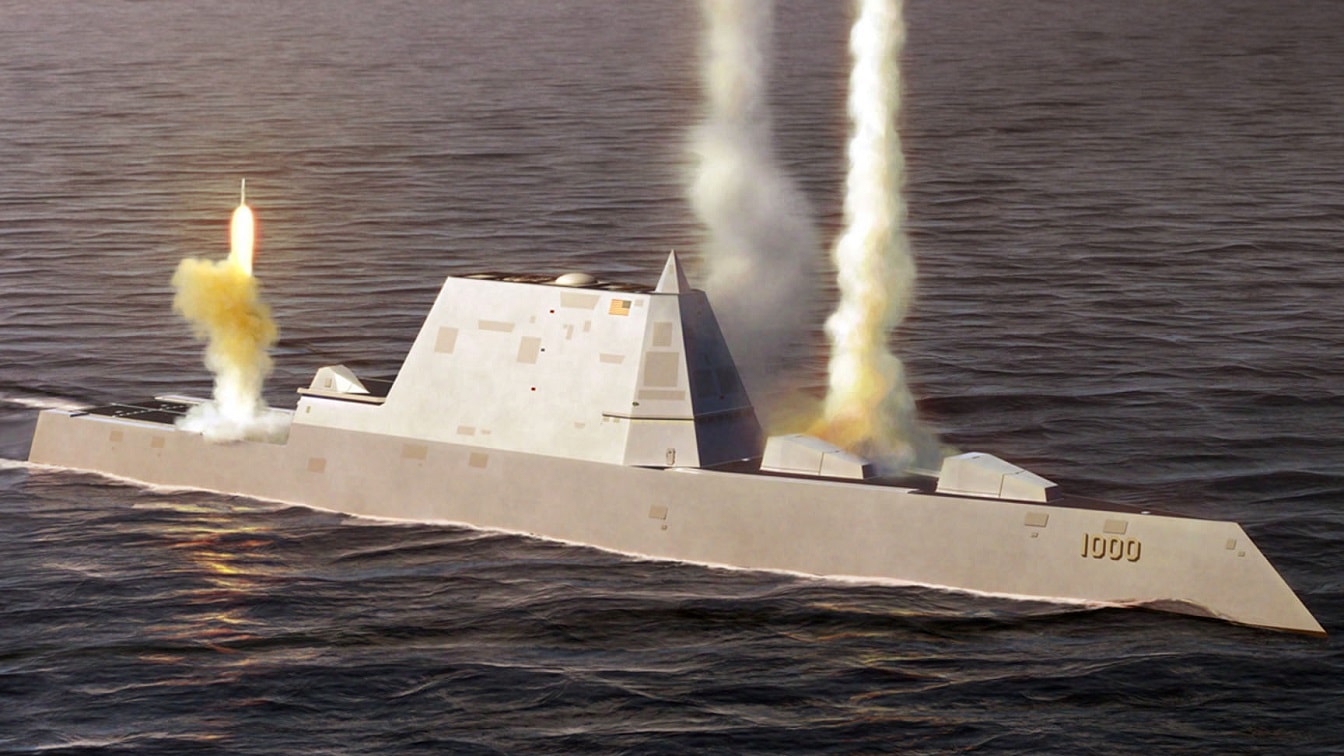Zumwalt: A Stealth Destroyer Armed with Hypersonic Missiles? The arrival of hypersonic weapons on board the Navy’s USS Zumwalt by 2025 will be a historic and significant development, as it will introduce a new “speed of attack” for the surface warship.
By traveling more than five times the speed of sound, the Navy’s now emerging Conventional Prompt Strike weapon will hold a new range of targets at risk from a wide range of locations.
The principal advantage of hypersonics is of course speed, an ability to strike and destroy an enemy target before a defender has any kind of a chance to intercept, defend against, or counterattack.
Conventional Warheads
Tomahawk missiles and harpoons can travel at high speeds with precision guidance systems, and newer Tomahawk variants can even track and destroy moving enemy targets.
However, while a Tomahawk can travel ranges as far as 900 miles at speeds of 550 miles per hour, a hypersonic weapon can travel exponentially faster and massively shorten any possible response time available for defenders.
SM-2, SM-3, and SM-6 ship-fired interceptors also travel at high speeds as ship-defense weapons against incoming ballistic missiles and other threats. When integrated with Aegis Combat Systems, these interceptors can perform both ballistic missile defense as well as air and cruise missile defense.
There are also quite possibly some offensive uses for the SM-6 when used with a networked, beyond-the-horizon relay system or network.
The real question with ship-fired hypersonics likely relates to guidance technology and potential dual use as both an offensive and defensive weapon.
Certainly, a Zumwalt-fired hypersonic missile can perform high-priority, high-speed land-attack missions and also quite possibly attack enemy ships.
The Conventional Prompt Strike weapon shares what’s called a Common Glide Body projectile with the Army’s Long Range Hypersonic Weapon. While each weapon is specifically tailored for a particular service, the development of each weapon draws upon and uses a common projectile.
The glide body is a warhead that gets thrust into the atmosphere at hypersonic speeds traveling five or more times the speed of sound. It is a 34-inch booster called an “all up round” which will fire from ground launchers as well as U.S. Navy ships or submarines.
Once airborne, the Common Hypersonic Glide Body can skip along the upper boundaries of the earth’s atmosphere before relying upon the sheer speed of its descent onto a target. Destruction of a target can be accomplished by the sheer force and speed of impact.
A critical question for the Conventional Prompt Strike weapon pertains to its guidance systems and potential ability to hit moving targets.
Sure enough, Army senior weapons developers working on the Long Range Hypersonic Weapon say they are developing a “tech insertion” package for the weapon to enable it to hit moving targets.
This would be a paradigm-changing step forward for both land and sea hypersonic weapons.
The USS Zumwalt could, for example, hit moving enemy ships or even moving land targets at hypersonic speeds.
MORE: The F-35 Now Comes in Beast Mode
MORE: Why the U.S. Navy Tried to Sink Their Own Aircraft Carrier
Kris Osborn is the Military Affairs Editor of 19FortyFive and President of Warrior Maven – Center for Military Modernization. Osborn previously served at the Pentagon as a Highly Qualified Expert with the Office of the Assistant Secretary of the Army—Acquisition, Logistics & Technology. Osborn has also worked as an anchor and on-air military specialist at national TV networks. He has appeared as a guest military expert on Fox News, MSNBC, The Military Channel, and The History Channel. He also has a Masters Degree in Comparative Literature from Columbia University

